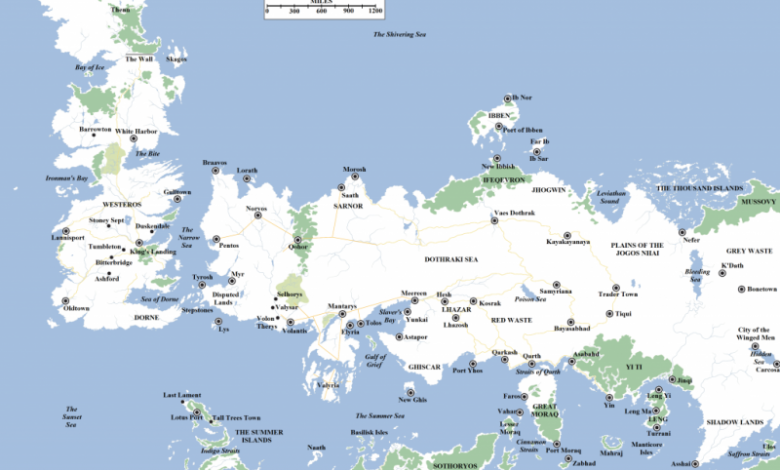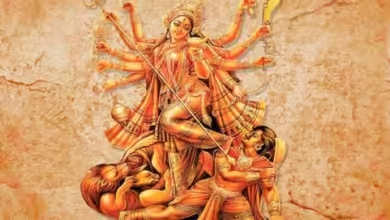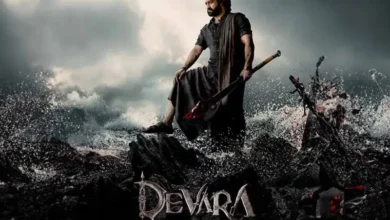The World of Ice and Fire: The Untold Story of Essos and Westeros

A Song of Ice and Fire (ASoIaF Stories): Part 1
The old Mythic Great Empire of the Dawn
Timeline: Prehistoric – 8000 BC
The Great Empire of the Dawn was an ancient, fantastical civilization that spanned thousands of years and thousands of miles in the far east of Essos, according to legends preserved by the people of Yi Ti and Asshai. It was established by Emperor God-on-earth and ruled by his children, the line of semi-divine gemstone emperors who seemingly ruled for centuries.
The Great Empire of the Dawn was a legendary pre-Valyrian civilization of dragonlords in the Dawn Age, whose downfall at the hands of the Bloodstone Emperor ushered in the Long Night, with its remnants influencing the myths and legends of Essos and Westeros.
The Golden Empire of Yi-Ti
Timeline: 8000 BC – Present Day
The Golden Empire of Yi Ti is one of the oldest and most enduring civilizations in the world of A Song of Ice and Fire, existing since the Long Night beginning at 8000 BC. The Golden Empire arose in the wake of the Long Night, succeeding the mythic Great Empire of the Dawn which fell during that cataclysmic event.
Yi Ti is located in the Far East of Essos, bordered by the Bone Mountains, Jogos Nhai plains, Shadow Lands, and Jade Sea. The realm is ruled by a God-Emperor who is worshipped as divine, though modern emperors have less actual power.
The current ruler of the Golden Empire of Yi Ti is Bu Gai, the seventeenth azure emperor. He governs from the capital city of Yin. However, his power is significantly limited compared to historical god-emperors, as local governors and tax-collectors have carved out numerous princedoms across the provinces, diminishing the central authority of the emperor.
The Dawn Age
Timeline: 12000 BC – 8000 BC
In the beginning, the world was a place of mystery and wonder. Before the coming of man, the land was inhabited by the Children of the Forest, a small, magical race with a deep connection to nature. They lived in harmony with the land, worshipping the old gods and shaping the forests. The Children carved faces into weirwood trees, creating the heart trees that would later be central to the religion of the old gods.
The Arrival of the First Men
Timeline: Beginning around 12000 BC
Thousands of years ago, the First Men crossed the narrow sea from Essos to Westeros via a land bridge called the Arm of Dorne. They brought with them their horses, bronze weapons, and a new god, the sun of the south. The First Men began to cut down the sacred forests of the Children of the Forest, leading to a long and brutal conflict known as the Dawn Wars. Eventually, a pact was forged on the Isle of Faces, ending the war and marking the beginning of a long era of peace. The First Men adopted many of the Children’s customs, including the worship of the old gods.
The Age of Heroes
Timeline: 10000 BC – 6000 BC
The Age of Heroes followed, a time of legendary figures and great deeds. It was an age when the ancestors of many great houses of Westeros lived. Bran the Builder, founder of House Stark, raised Winterfell and the Wall. Garth Greenhand, the mythical ancestor of House Gardener, brought agriculture to the Reach. Lann the Clever, a cunning trickster, took Casterly Rock from the Casterlys, establishing House Lannister. This era is shrouded in myth and legend, making it difficult to separate fact from fiction.
The Long Night
Timeline: Beginning around 8000 BC
A long and terrible winter known as the Long Night descended upon the world. In this time of darkness, the White Walkers, a race of ice creatures, emerged from the far north, bringing death and destruction. The Children of the Forest and the First Men united to fight this existential threat. According to legend, the last hero, with his companions, sought out the Children to help defeat the White Walkers. The war culminated in the Battle for the Dawn, where the White Walkers were driven back, and peace returned to the land.
The Coming of the Andals
Timeline: 6000 BC – 4000 BC
The Andals, a warlike people from Essos, invaded Westeros thousands of years later. They crossed the narrow sea and landed in the Vale, bringing with them iron weapons and a new religion: the Faith of the Seven. The Andals conquered much of the southern kingdoms, overthrowing the old kingdoms of the First Men. They intermarried with the First Men, and their religion spread throughout Westeros, except for the North, where the Starks and other northern houses continued to worship the old gods.
The Old Empire of Ghis
Timeline: 4000 BC – 200 BC
The Ghiscari Empire, also known as the Old Empire of Ghis, was a powerful civilization in Essos that existed alongside the Valyrian Freehold. After the establishment, the Ghiscari Empire expands its influence across Essos, dominating the surrounding regions and establishing several city-states, including Astapor, Yunkai, and Meereen. The empire becomes a hub for trade and commerce.
The Second Ghiscari War results in the complete destruction of the Old Empire of Ghis. Valyrian forces conquer the capital city of Ghis, marking the end of the Ghiscari Empire.
The Rise and Fall of Valyria
Timeline: 8000 BC – 100 BC
Meanwhile, across the narrow sea in Essos, the Valyrian Freehold rose to power. Valyria, located on a peninsula surrounded by volcanoes, was a powerful empire built on the strength of dragons and sorcery. The Valyrians tamed dragons, becoming the most formidable power in the known world. They conquered much of Essos, establishing colonies and spreading their influence. However, the Doom of Valyria, a catastrophic event that shattered the peninsula, led to the collapse of the Freehold. The secrets of dragon-taming and many of Valyria’s arcane arts were lost in the cataclysm.
The arrival of Targaryens in Dragonstone
Timeline: Around 102 BC
The arrival of the Targaryens on Dragonstone marks a significant moment in Westerosi history, particularly as it set the stage for their eventual conquest of the Seven Kingdoms. The Targaryens, originally part of the Valyrian Freehold, settle on the island of Dragonstone as a precaution against the impending Doom. Aenar Targaryen, along with his family, is sent to govern Dragonstone, which serves as the westernmost outpost of Valyria.
The catastrophic event known as the Doom occurs, destroying the Valyrian Freehold. The Targaryens are one of the few noble families to survive due to their location on Dragonstone. After the Doom, the Targaryens remain on Dragonstone, where they continue to breed and train dragons. They establish themselves as a significant power in the region, maintaining their Valyrian heritage and culture.
The Targaryen Conquest
Timeline: 2 BC – 1 AC
One family of Valyrian descent, the Targaryens, survived the Doom by relocating to Dragonstone, a fortress off the coast of Westeros. A century later, Aegon Targaryen and his sister-wives, Visenya and Rhaenys, embarked on the conquest of Westeros. With their three dragons—Balerion, Vhagar, and Meraxes—they subdued six of the seven kingdoms, forging the Iron Throne and establishing a unified realm under Targaryen rule. The only kingdom to resist was Dorne, which maintained its independence through guerrilla warfare and diplomacy.
The Reign of the Targaryens
Timeline: 1 AC – 283 AC
The Targaryen dynasty ruled Westeros for nearly three centuries. The reigns of individual Targaryen kings varied widely, from the wise and just to the mad and tyrannical. Notable rulers include Jaehaerys I, known as the Conciliator, who brought peace and prosperity; and Maegor the Cruel, whose brutal reign was marked by conflict and rebellion. The Dance of the Dragons, a civil war between rival Targaryen factions, devastated the realm and led to the extinction of the dragons.
The Fall of the Targaryens
Timeline: Around 283 AC
The Targaryen reign eventually ended with the rise of Robert Baratheon. The seeds of rebellion were sown during the reign of King Aerys II, known as the Mad King. His increasing paranoia and cruelty led to widespread unrest. When Prince Rhaegar Targaryen allegedly abducted Lyanna Stark, the resulting conflict sparked Robert’s Rebellion. Robert Baratheon, Eddard Stark, Jon Arryn, and other noble lords rose against the crown. The war culminated in the Battle of the Trident, where Robert killed Rhaegar, and the Sack of King’s Landing, where Jaime Lannister slew the Mad King. Robert ascended the Iron Throne, marking the end of Targaryen rule.
The Baratheon Dynasty
Timeline: 283 AC – Present Day
The Baratheon dynasty, founded by Robert, brought a new era to Westeros. However, the realm was far from stable. Robert’s rule was marked by political intrigue, financial mismanagement, and personal excesses. His death in a hunting accident left the throne to his son, Joffrey, whose cruelty and incompetence plunged the realm into chaos. The War of the Five Kings erupted, with various claimants vying for the Iron Throne, leading to widespread devastation and the fracturing of the kingdom.
The Return of the Dragons
Timeline: Present Timeline
In Essos, Daenerys Targaryen, the last surviving member of the Targaryen dynasty, began her quest to reclaim the Iron Throne. After the death of her brother Viserys, Daenerys hatched three dragon eggs, bringing dragons back into the world. She built an army and gained followers, determined to return to Westeros and restore her family’s legacy.
The Looming Threat
As political machinations and wars of succession consumed Westeros, a far greater threat loomed in the North. The White Walkers, long thought to be a myth, began to stir again. The Night’s Watch, sworn to defend the realm from the dangers beyond the Wall, found themselves facing an ancient and powerful enemy. The Great War, a battle for the survival of humanity, awaited as the realms of men continued their petty squabbles.
Conclusion
The history of Westeros is one of constant change, with kingdoms rising and falling, dynasties coming to power and being overthrown, and ancient threats emerging from the shadows. “The World of Ice and Fire” provides a rich tapestry of lore and legend, setting the stage for the epic events of the “A Song of Ice and Fire” series, where the fate of the realm hangs in the balance.
About the Book
The World of Ice & Fire is a companion book to George R. R. Martin’s A Song of Ice and Fire fantasy series, written by Martin, Elio M. García Jr. and Linda Antonsson. Published in 2014, it is a comprehensive history of the fictional world of Westeros and the lands beyond, told from the perspective of an in-world “Maester”.
The World of Ice & Fire provides a detailed account of the epic battles, rivalries and rebellions that lead up to the events of A Song of Ice and Fire and the Game of Thrones TV series. It covers the history from the Dawn Age and Age of Heroes, through the Targaryen conquest and rule, up to the fall of the Mad King and start of the main book series.
Disclaimer
The ASOIAF Stories mentioned here is based on stories of A Song of Ice and Fire by George R. R. Martin and fan theories. (Canon and Non Canon)
To know more about the known world in the Ice and Fire Series, click here.
Click ASoIaF Stories to read more stories about the world of Ice and Fire.



